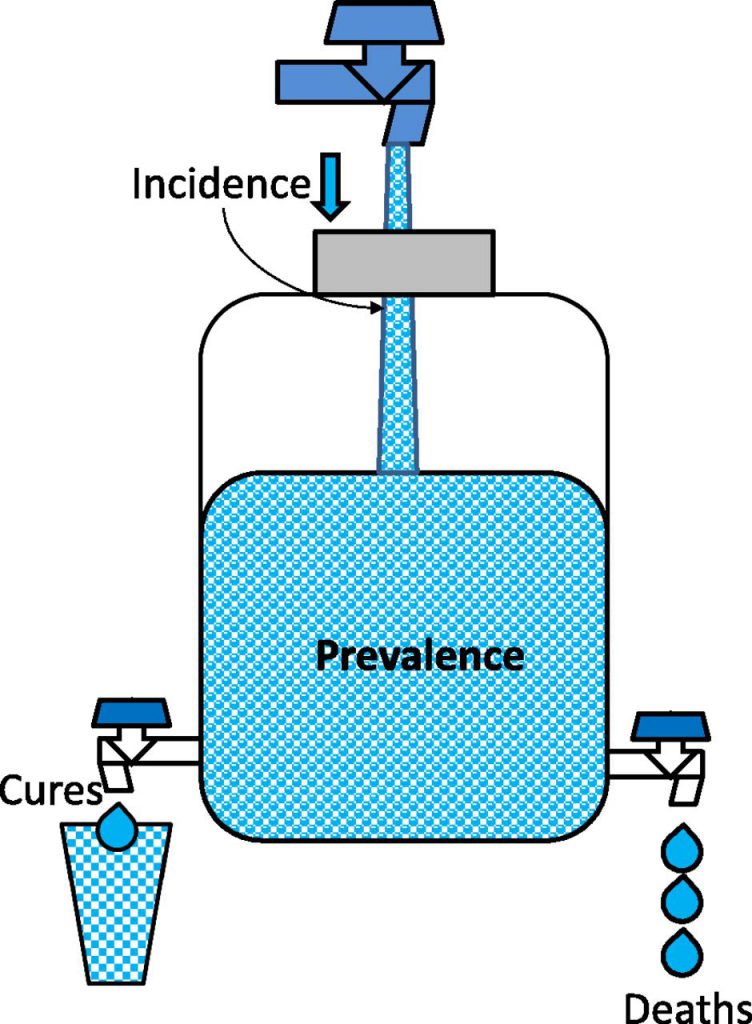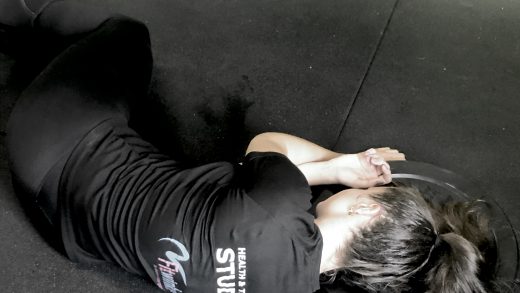Is Crossfit dangerous? I think there is a lot of discussion on “how safe” Crossfit is. So let’s see what is in the literature on how “dangerous” Crossfit really is.
To answer the question: “Is Crossfit dangerous”? We need to answer two questions. 1. How likely am I to get an injury and 2. How severe are those injuries. To answer question one, we need to understand the difference between prevalence and incidence.
Prevalence/ incidence
In sports injury research, it is important to distinguish between incidence and prevalence. In epidemiology, prevalence refers to the proportion of individuals in a population who have a disease at a particular time, whereas incidence refers to the number of new occurrences of disease during a specified period of time.[1]
To say something about injury risk we need know the new injuries (incidence). A general calculation used in publications is the injuries per 1000 hours of sports participation to indicate injury rate. Let’s see if we can find that on Crossfit.
Injury rate in Crossfit
A systematic review with meta analysis by Claudino JG, Gabbet TJ et. al.[2] reviewed all available evidence in 2018. They state that only 2 articles were of high quality and low bias. Within these studies they found an injury rate between 1,9 and 3,1 injuries per 1000 hours of Crossfit training. In contact sports like soccer the injury rate is between 2,4 and 9,4 injuries per 1000 hours of exposure (match and training) [3]. So compared to a contact sport like soccer the injury rate in Crossfit is fairly low. However, the number of crossfitters that sustained an injury over the last year is between 19 and 74%. The paper states that this might be selection bias or due to inadequate management of training volume, but also that Crossfit participants might have more training hours and that we have to be careful to compare the injury rate with other sports.
A study done by Mehrab M et. al. [4], found that the incidence in dutch Crossfitters is 56,1%. Which lies between the 19 and 74% of the review described above. However, Mehrab et. al. state that the big difference might be due to different definitions on what an injury is.
Severity of injuries
So what about the severity of the injuries? One might prefer numerous of small muscle strains over 1 spinal cord injury.
The studies are consistent in injury location: Shoulder, knee and lower back seem to be the most involved. Most injuries are classified as overuse or chronic overuse injuries. The review of Glaudino et al. [2] refer to a study that saw 118 lesions, with 9 requiring surgical intervention.
A study done by Hopkins BS et al. [5] state that 6 out of 523 patients who visited a major academic clinic between 2010 and 2016 needed surgical intervention. All 6 had a discectomy.
Other injuries are not described in detail. However more severe injuries that are caused by Crossfit are: latissimus dorsi tears, labral tears of the shoulder, achilles tendon ruptures, rhabdomyolysis and bone fractures.

Conclusion
The literature shows us that Crossfit is at the most as dangerous as contact sports like soccer, but more likely less injury prone. On the severity of the injuries not much is described. However most injuries seem to involve overuse injuries and no severe lesions or fractures.
I think all sports have a risk of injury, but what is more dangerous for your body is doing nothing. Sitting behind a desk all day and watch some Netflix at night, exceeds the danger of musculoskeletal injuries caused by sports. Serious injuries do happened in sports and thus also in Crossfit. If we look at the research one might say that the negativity towards Crossfit is exaggerated.
This does not mean, we as trainers, coaches, physios etc. can do better and decrease the risk of injury as much as possible.
In my next blog I will go into recommendations derived from the studies mentioned above on how to prevent these injuries. As well as giving my personal view on certain Crossfit related injuries.
References
- Rothman KJ, Greenland S. Measures of disease frequency. In: Rothman KJ, Greenland S, eds. Modern Epidemiology. 2nd ed. Philadelphia, PA: Lippincott Williams & Wilkins; 1998:29–46
- Glaudino JG, Gabbit TJ, Bourgeious F. et. al. CrossFit Overview: Systematic Review and Meta-analysis. Sports Med Open. 2018 Dec; 4: 11.
- Firmann D, Herbst M, Ingelfinger P, Simon P and Tug S: Analysis of Injury Incidences in Male Professional Adult and Elite Youth Soccer Players: A Systematic Review. J Athl Train 2016, May; 51(5): 410-424
- Mehrab M, de Vos RJ, Kraan Ga, Mathijssen N M.C.: Injury Incidence and Patterns Among Dutch CrossFit Athletes. Orth. J. Sports Med. 2017. dec. 5 (12).
- Hopkins BS, Cloney MB, Kesavabhotla K, Yamaguchi J, Smith ZA and Dahdaleh NS: Impact of CrossFit-Related Spinal Injuries. Clin J Sport Med 2017 Nov, 16.




